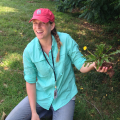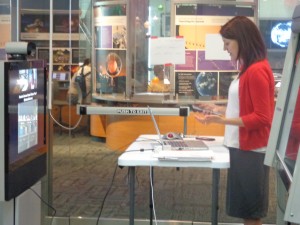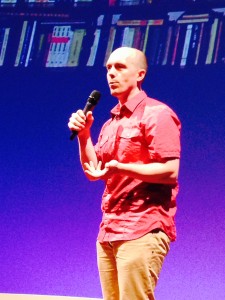I am part of Team Dirt (Arthina Blanchard, Amy Lawson, myself and our mentor Dr. Julia Stevens) working on the Citizen Science Soil Microbiology project entitled Dirt is Alive. Our goal is to analyze the microbiome of the dandelion and specifically look at the microbes, the bacteria and fungi, associated with the dandelion. Click on the link below to hear Dr. Julia Stevens explain our project in more detail.
Click here: Dr. Julia Stevens describing Dirt is Alive Citizen Science Project
In order for our Citizen Science project to be a success there are several key components that must be met. First and foremost getting the students engaged and excited about the project is key. I plan to have Dr. Julia Stevens help ignite the excitement by visiting our classroom at the very beginning of the year and explaining her research to my students. She will then solicit their help in collecting data to be used as part of her research. I imagine my students will buy in hook, line and sinker as they interact with Dr. Stevens and realize that they are going to be part of REAL SCIENCE.
An important tangible key component of this project is the students must be able to actually find the dandelions. When Team Dirt was searching for dandelions at Prairie Ridge we discovered this was more difficult that we first thought. But after a bit of searching we hit the jackpot and were able to find plenty of dandelions. Dr. Stevens chose dandelions for her research because they can be found almost anywhere. In preparation for my students conducting the project in class, I plan to scope out the school grounds for dandelions ahead of time. I want to make sure students experience success in the first step of our project. Of course THEY will actually find the dandelions on their own, but we will avoid spending a few hours searching the entire school grounds (big campus) for dandelions – the reality and time constraints of a one hour block of class time have to be considered.

Lastly, I think direct contact and communication with Dr. Julia Stevens and other scientists at the museum is going to be a crucial component for this project’s success. Once the students have collected the dandelion soil samples we will need to utilize the science museum’s lab in order to analyze the data and identify the bacteria and fungi associated with the dandelion’s microbiome. Part of our continued communication with the museum will be participation in the museum’s SMARTS program (Scientists Making Answers Relevant for Teachers and Students). This program will allow my students to interact with scientists in the Genomics Lab and get real time feedback about our ongoing Dirt is Alive project. I will need to work with my media specialist to make sure we can access the necessary equipment for the interactive video conferencing. While we were working in the lab this summer, Dr. Julie Urban, was actually conducting a SMARTS session with a group of educators participating in a conference in Greensboro. Dr. Urban invited us to join her in the video conference. It was a great opportunity to see the SMARTS program in action from the scientist side. This program will be a key component in continuing the connection between the middle school science classroom and the museum.

